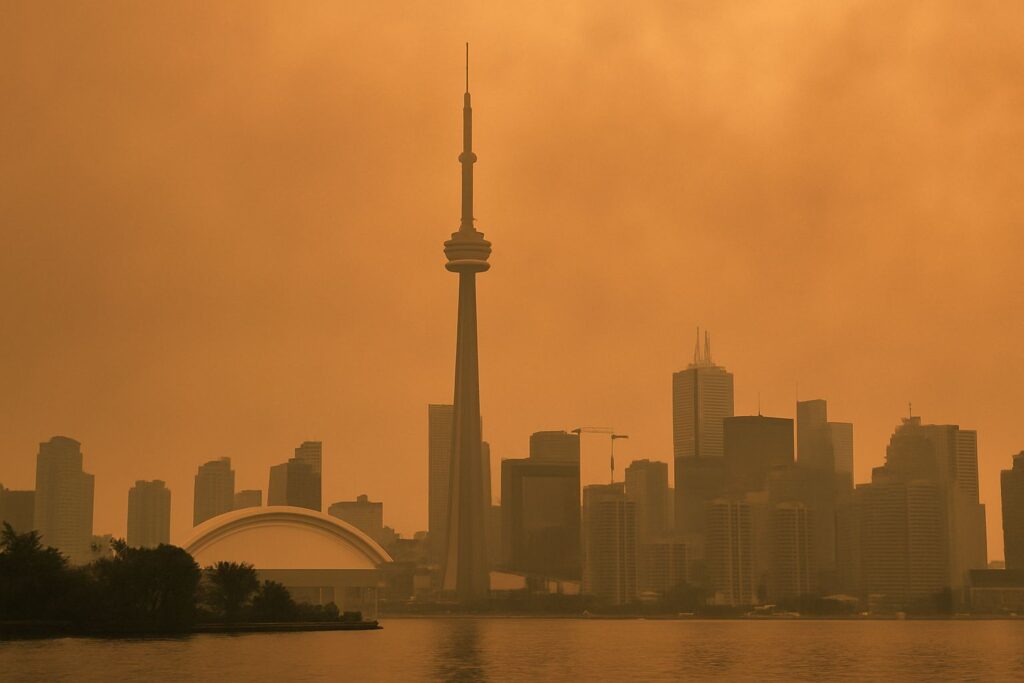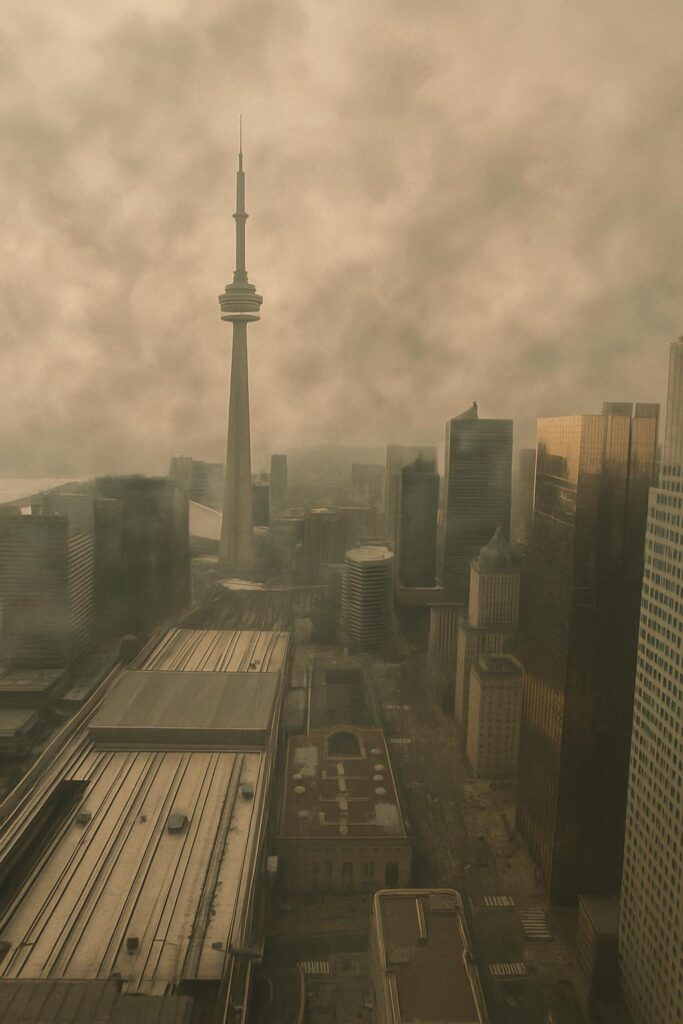Air Quality Index Toronto Hits 10+ as Wildfire Smoke Triggers Health Alert

Toronto’s air quality has deteriorated to dangerous levels as wildfire smoke from western Canada has descended upon the city, prompting Environment Canada to issue a special air quality statement for most of southern Ontario. The Air Quality Health Index (AQHI) in Toronto spiked to an alarming 10+ on Friday, the highest level on the scale, indicating a “very high risk” to public health.

Toronto Ranks Second Globally for Worst Air Quality
The situation became so severe that Toronto briefly ranked as the second worst city globally for air quality on IQAir’s live global index, scoring 170 and earning the classification of “unhealthy.” This dramatic decline in air quality has raised serious concerns among health officials and residents alike.
The primary culprit behind this dangerous air quality is PM2.5 pollution – fine particulate matter that can penetrate deep into the lungs and enter the bloodstream. These microscopic particles, carried by smoke from over 200 wildfires burning out of control across Manitoba and Saskatchewan, pose significant health risks to the general population.
“An increased likelihood of adverse effects and aggravation to the heart and lungs is expected among the general public,” warned IQAir in their latest assessment of Toronto’s air quality situation.
How Wildfire Smoke Is Affecting Southern Ontario
The thick smoke moved into the Greater Toronto Area by Friday afternoon after strong winds carried the pollution across the prairies into Ontario. According to FireSmoke Canada, the hazardous conditions are expected to linger through the evening, with additional waves of smoke predicted to arrive by midday Saturday.
The special air quality statement issued by Environment Canada stretches from Windsor to Ottawa, covering major population centers including:
• Toronto
• Mississauga
• Brampton
• Markham
• Hamilton
• Vaughan
• Richmond Hill
• OshawaBy evening, the AQHI level had dropped slightly to 9, but remained classified as “high risk,” continuing to pose significant health concerns for residents throughout the region.
Health Risks and Who Is Most Vulnerable
Environment Canada has urged residents – especially vulnerable populations – to limit outdoor activity and stay indoors if possible. Those at highest risk from wildfire smoke exposure include:
• Children and seniors
• Pregnant women
• People with asthma or heart conditions
• Individuals with existing respiratory issuesExposure to the high levels of PM2.5 pollution can cause a range of symptoms, from eye, nose, and throat irritation to more serious issues like coughing, difficulty breathing, headaches, and dizziness. For those with pre-existing conditions, the wildfire smoke can significantly worsen lung or heart problems.
How to Protect Yourself from Wildfire Smoke in Toronto
Health officials recommend several measures to reduce exposure to the harmful effects of wildfire smoke:
1. Stay indoors and keep windows shut to prevent smoke from entering
2. Use air purifiers with HEPA filters to clean indoor air
3. Avoid strenuous outdoor activities until air quality improves
4. Regularly monitor air quality via Environment Canada or IQAir websites
5. Seek immediate medical attention if symptoms worsen
Toronto Air Quality Forecast
While air quality may improve slightly overnight, meteorologists predict more smoke will reach the GTA by midday Saturday, potentially triggering another health advisory. Residents are advised to stay informed about changing conditions by checking Environment Canada’s official air quality site or real-time updates from IQAir.
The current situation serves as a stark reminder of how distant wildfires can have far-reaching impacts on air quality and public health, even in major urban centers hundreds of kilometers away from the actual fires.
For the latest updates on Toronto’s air quality and wildfire smoke conditions, visit Environment Canada’s air quality monitoring website or download air quality monitoring apps to receive real-time alerts.



